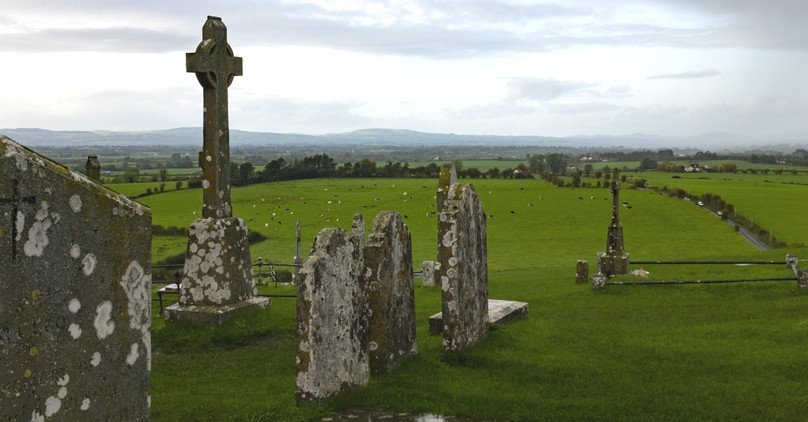
St. Patrick’s Day is a holiday we grew up with in the Western world. Many people wear something green to celebrate the holiday. Other people enjoy cooking traditional Irish foods and watching New York’s St. Patrick’s Day parade where the river is turned green. While all of these things are nice, no part of it is directly connected to the historical person of St. Patrick.
Sadly, many of us associate St. Patrick’s Day with leprechauns, the color green, and lots of gold rather than the historical person of St. Patrick. Even though this is common, it is important to familiarize ourselves with the real St. Patrick, understand his roots, and learn what he did to help spread Christianity. The historical person of St. Patrick is worth studying and learning about because he is a great source of encouragement in our own walks with Christ. From history, we know St. Patrick is credited with being a missionary over 1,600 years ago to the Irish people, converting over 135,000 people, and setting up 300 churches.
Through seeing his trials and troubles, we can be encouraged in our difficult times. Just as St. Patrick found strength in God during these dark times, we can too. Although most of us will never have to face what St. Patrick did during his life, we will all experience our own struggles. Without knowing the true St. Patrick and his history, we will never be able to be encouraged and find solace in a fellow follower of Jesus. This is why it is important to learn about the history of St. Patrick, who he was, and his impact on Christianity.
Early Days
Before St. Patrick was known as St. Patrick, he was known by his real name, Maewyn Succat. Maewyn was born in 387 A.D. in modern-day Great Britain, which at the time was the Roman Empire. At the young age of 16, he became a slave after being taken by Irish raiders. While in Ireland, Maewyn learned about the local practices of the Druids. Despite their sinful practices, false worship, and practice of the occult, Maewyn chose to be brave and shared the Gospel of Jesus with them.
The Druids were known to participate in many evil rituals, including human sacrifice. Not only this, but the Druids were also closely connected with witchcraft. There are still modern-day Druids; however, the Druids of Maewyn time had more connection with the dark arts, the occult, and blood sacrifices. As one can see, it was not an easy task for Maewyn to approach them, much less share the Gospel with them. Yet this is exactly what he did.
Later, Maewyn had a dream that he believed came from God, telling him that his ship was ready to take him away from Ireland. After he left Ireland, Maewyn had another dream of the Irish calling him back to them. Moved by conviction, Maewyn returned to the Irish people to continue to share Christ with them. Throughout his life, this is what Maewyn continued to do. He didn’t treat the Great Commission as a suggestion—rather, he chose to apply it to his life and truly obey the Lord (Matthew 28:18-20).
His Impact
As mentioned, it was extremely difficult for Maewyn to share Christ with the Druids, but it was also just as difficult to share the gospel with the rest of the Irish. Despite the difficulties he faced, he was still able to help many come to know the Lord. Through the working of God, the Irish were open to his message of Jesus, and Maewyn is credited with converting 135,000 people during his time in Ireland. This was due to the Holy Spirit’s working through Maewyn.
Maewyn also effectively changed several of the Druid symbols into Christian symbols. This is known today as Christianization. The most popular and well-known of Maewyn’s Christianization was how he changed the Druid symbol of a three-leaf clover into representing the Trinity of the Father, the Son, and the Holy Spirit. Just as a clover has three leaves, yet remains one clover, God is One, yet three distinct Persons. This is a popular symbol that is connected to St. Patrick which can also help us in our own evangelism endeavors.
Maewyn’s name was changed after he became a priest to Patricius or Patrick. The name Patricius or Patrick is the Latin term for “father figure.” His former name was Welsh and meant “devoted friend.” St. Patrick felt it was good to change his name in order to better encourage, support, and be a father figure to his congregation. The name has stuck as many individuals have never known St. Patrick’s real name or his humble beginnings.
Modern Celebrations of St. Patrick
Thousands of people celebrate St. Patrick’s Day each year and there is nothing wrong with celebrating this holiday as long as it is done in a manner worthy of Christ (Romans 14:6). A fun way to celebrate St. Patrick’s Day is by wearing green, spending time with family, and praising God for all that he has done throughout time, including His work through Patrick. As believers, we should not celebrate St. Patrick’s Day as the world does by drinking alcohol and going to immoral parties. This kind of celebration is not honoring God. Instead, it follows the sinful practices of the flesh and turns something good into something bad.
If St. Patrick was aware of these fleshly celebrations done under his name, he would be thoroughly ashamed. St. Patrick was a man who was taken from his home by Irish raiders to a land unknown to him. He could have done everything wrong, complained, and blamed God, yet he didn’t. Instead, he saw it as an opportunity for the Lord’s work to be done. Therefore, the modern practices and celebrations of St. Patrick's Day have nothing to do with the historical person of St. Patrick.
Should Christians Celebrate St. Patrick’s Day?
There is nothing in the Bible that talks about Patrick or St. Patrick’s Day. However, there is nothing wrong with celebrating this holiday as long as your celebration is done in a manner worthy of Christ, as stated earlier. If you want to celebrate it in a manner worthy of Christ, focus on the historical person of Patrick—not a created version of him. Today, we celebrate St. Patrick’s Day every year on March 17 because March 17th, 461 is the day Patrick died. Each year, we celebrate St. Patrick’s Day as a way of remembering him and all that God did through his missionary work to the Irish.
If you want to help others know about the historical person of St. Patrick, teach them the truth of his history. As mentioned, St. Patrick was a man born in modern-day Great Britain in the year 387 A.D., who was taken by Irish raiders to Ireland to work as a slave. While in Ireland, Patrick started sharing Christ with the local Irish people, who were mainly Druids. Despite the dangers and difficulties Patrick faced, he chose to help the Irish people and tell them the gospel of Jesus.
While many people today celebrate St. Patrick’s Day in an incorrect way of immorality and drunkenness, as believers, we can celebrate St. Patrick in a manner worthy of Christ. We have the privilege of celebrating St. Patrick for all that he did to help bring the Irish into a relationship with Christ. He turned the terrible thing of being taken away from his homeland into something beautiful—helping the Irish to come to know their Savior and Lord. All of us can learn great lessons from his life, but none of us can do this if we do not know the real, historical person of St. Patrick.
Photo Credit: ©GettyImages/Sara Valenti









